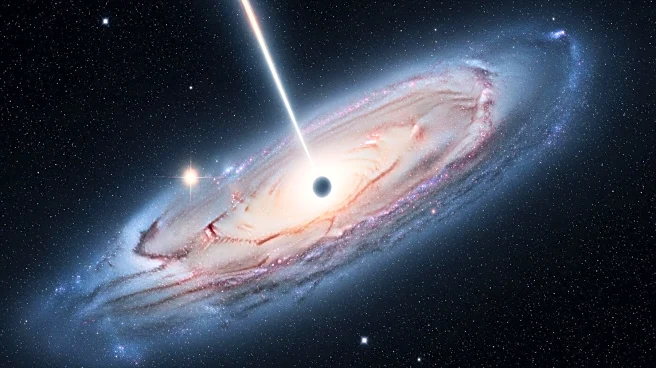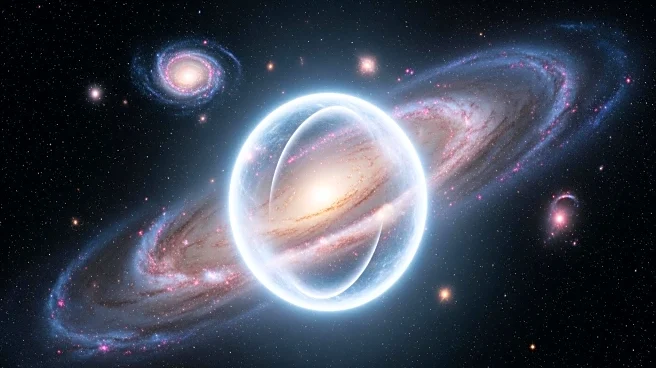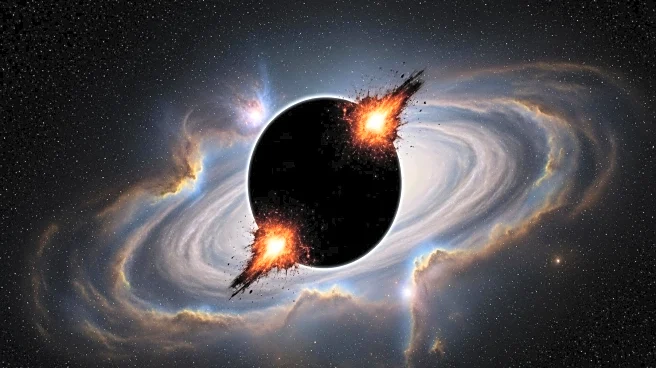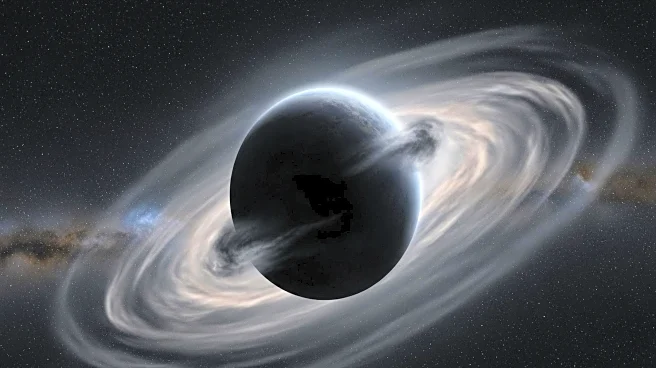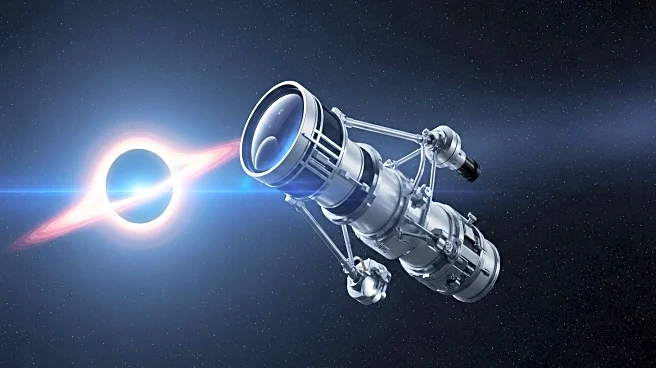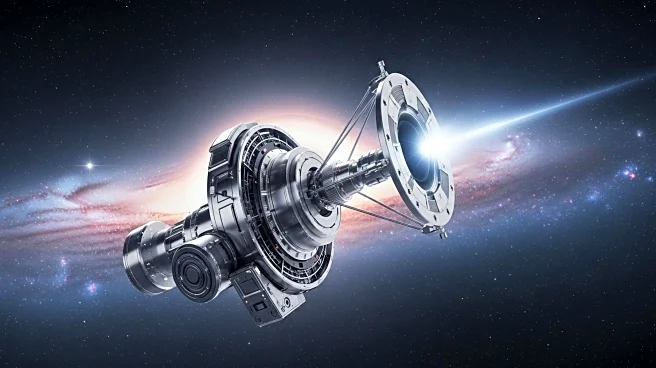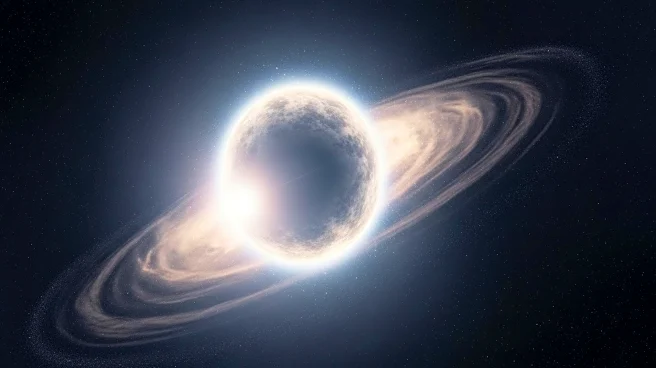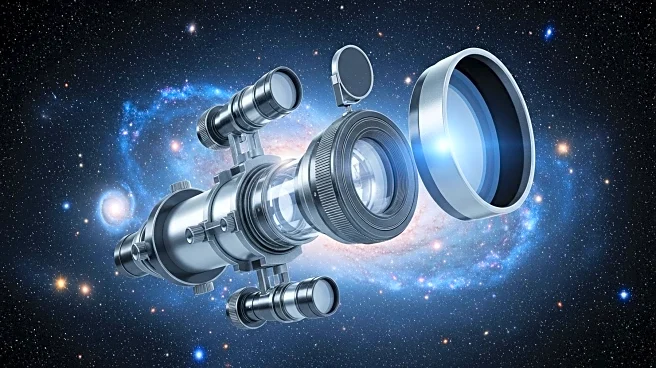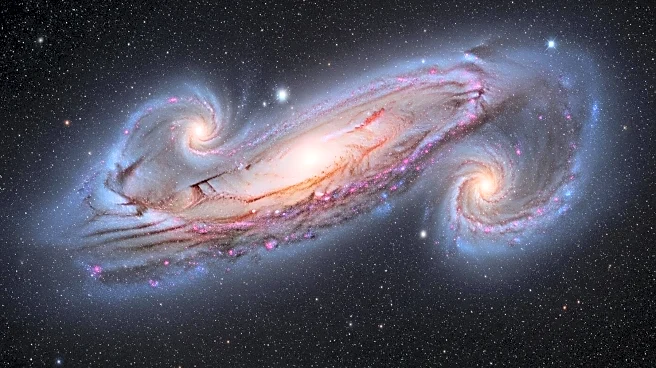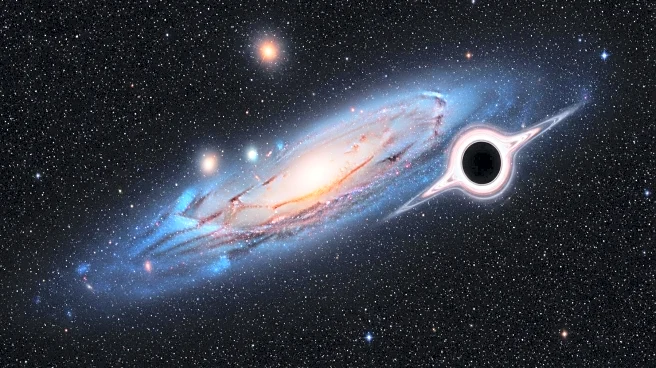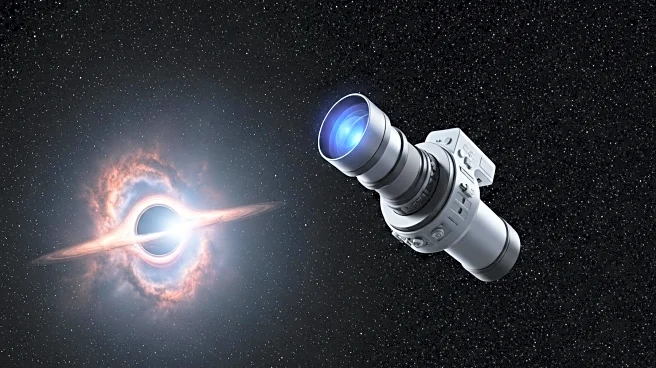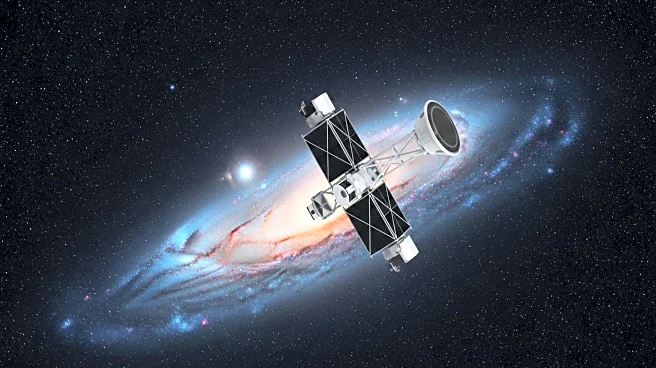What is the story about?
What's Happening?
The James Webb Space Telescope (JWST) has captured the clearest-ever infrared image of the jet emanating from the supermassive black hole at the center of the M87 galaxy. This observation has unveiled new details about the jet, including the presence of a faint counter-jet moving in the opposite direction. The jet, appearing as a luminous pink ribbon, stretches across a hazy violet backdrop, with bright knots along its length indicating areas where particles are accelerated to near-light speeds. M87, located approximately 55 million light-years from Earth, is one of the most studied galaxies, and its central black hole, M87*, was the first to be photographed directly in 2019. The JWST's Near Infrared Camera (NIRCam) was used to image the jet in four infrared bands, providing the most detailed infrared portrait of M87's outflow to date.
Why It's Important?
This breakthrough in imaging provides significant insights into the physics of black holes and their jets, which are natural laboratories for studying extreme conditions in the universe. The ability to observe the counter-jet and the detailed structure of the main jet enhances our understanding of particle dynamics and magnetic fields in such environments. These findings could have implications for theoretical models of black hole behavior and the role of jets in galaxy evolution. The study of M87's jet also contributes to broader astrophysical research, potentially influencing future observations and experiments aimed at understanding cosmic phenomena.
What's Next?
Further analysis of the data collected by the JWST could lead to new discoveries about the behavior of particles in extreme conditions. Researchers may continue to refine their models of black hole jets and explore the implications for galaxy formation and evolution. The detailed imaging techniques developed for this study could be applied to other galaxies, expanding our knowledge of the universe. Additionally, ongoing observations by the JWST and other telescopes will likely continue to provide valuable data for astrophysical research.
Beyond the Headlines
The ability to capture such detailed images of cosmic phenomena highlights the advancements in space telescope technology and the importance of international collaboration in scientific research. The findings from the JWST's observations of M87 may also inspire new theoretical work in astrophysics, challenging existing models and encouraging innovative approaches to understanding the universe.
AI Generated Content
Do you find this article useful?
